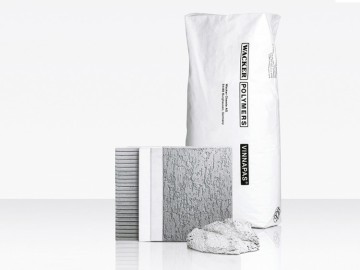Our system has noticed that you are based in United States, but the current country setting is Norway. Do you still want to change your country?

Pausing for Breath
Modern people spend 80 to 90% of their lives in buildings. No wonder, then, that healthy living has become ever more important in recent years. There is a particular focus on indoor air: people who live sustainably and consciously want to be able to breathe freely in their own four walls.
Whether new construction or renovation, healthy living, along with energy efficiency, is one of the most important factors that property developers should consider. After all, our own home is somewhere we can retreat to and top up our energy levels. Bad, i.e. polluted, air is something we don’t want here. Day after day, a person inhales and exhales up to 20,000 liters of air on average, much of it indoors. If this air is polluted with emissions, it will impact health and wellbeing.
One of the main sources of such harmful emissions is the construction materials used. Wall paints, floor and tile adhesives can emit problem substances such as volatile organic compounds (VOCs) and plasticizers to the indoor air. It is therefore essential to be aware of this when selecting the construction materials. Ecolabels such as Green Seal, the EU Ecolabel and Blue Angel provide guidance. They help us to identify environmentally friendlier and healthier products. Another cause of polluted indoor air is mold, caused, e.g., by damp walls. Inhaling quantities of mold spores in the long term is also harmful to health.
Natural Materials: Naturally Good?

Whether solid wood or natural stone, natural materials are a popular choice for modern interior design. In kitchens, bathrooms and living rooms, they are inviting, and radiate harmony and stylish individuality. Not least, they enjoy the reputation of being especially healthy. In principle, that is naturally correct. However, even natural materials are pushed to their limits if they are treated and processed with adhesives, paints or impregnating agents that contain plasticizers, solvents or VOCs. The good news is that these essential aids have become ever safer in recent years. For example, marble and granite: to protect them and preserve their optical appearance, impregnation agents based on silicone resins are an excellent choice. They not only reliably protect against dirt pickup, but bring out the natural colors of mineral substrates especially effectively - while also being low-VOC and solvent-free.
More about silicone resinsLow-Emission from the Ground Up: Floors

A comprehensive selection of floor coverings in available nowadays: heat and sound-insulating cork competes with wooden boards, wood block, laminate and soft and fluffy textile carpets. But whatever floor covering you choose, it is only as healthy as the adhesive used. Modern adhesives are based on silane-terminated polymer binders. They can be produced without using conventional plasticizers and solvents. The result is low-emission adhesives with outstanding bonding properties that are easy to process. Whether for wood-block flooring, cork floors, carpets or floor tiles.
More about silane-terminated polymersLow-Emission Paints and Coatings

Wall paints, too, have progressed by leaps and bounds in recent years. The first modern paints in the 1940s were solvent-based and had a solvent/VOC content of up to 70%. Now, VAE (vinyl acetate-ethylene) technology permits the formulation of interior paints completely free of solvents and plasticizers. They are low-VOC, low-odor and ensure the indoor air is of the highest quality, so that rooms can be occupied immediately after painting. State-of-the-art paints have a VOC content of less than 1 gram/liter - without compromising functionality and price/performance ratio.
More about VAE bindersEffective Against Mold Spores: Dry Walls

Mold spores can be found in practically every interior room. However, they are only harmful to health if breathed in in large amounts. That happens if the spores encounter damp walls or surfaces and lead to mildew infestation. One of the main causes of mold is rising damp – when ground water rises up through walls, floors and masonry. This is prevented by a horizontal damp course. Building protection agents based on silicone resin technology are injected through boreholes directly into the masonry, where they form a waterproof barrier that effectively blocks rising damp. The walls are allowed to dry out permanently, while the air quality and indoor comfort are improved. A horizontal damp course proves effective as a preventive measure, but may also be installed in the course of renovation.
More about building protection agents






